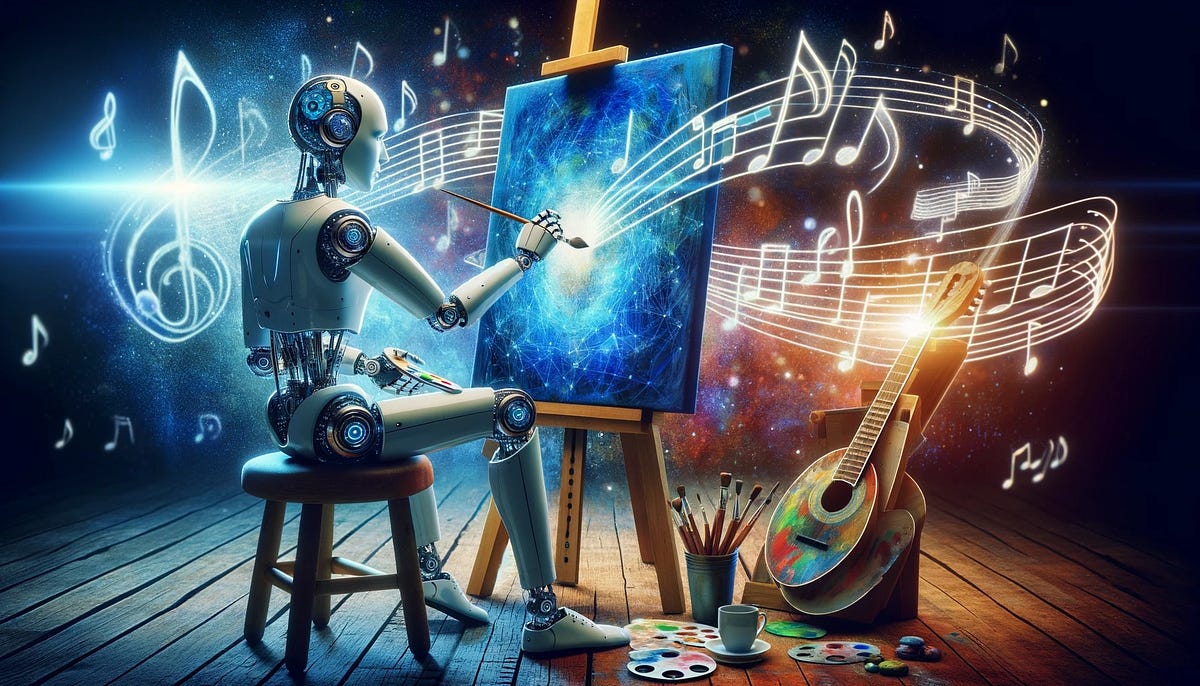
The Creative Revolution: How AI is Transforming Art, Music, and Writing
1. AI in Visual Arts: From Algorithmic Art to Deep Learning
AI's impact on visual arts is profound and multifaceted. Artists and technologists are leveraging AI to create new forms of art that were previously unimaginable.
Algorithmic Art: Algorithms can now generate artwork based on specific parameters, styles, and input from users. For example, platforms like Artbreeder allow users to mix and evolve images using AI, creating unique pieces that blend various artistic influences.
Deep Learning and Style Transfer: Technologies like neural style transfer enable artists to apply the visual style of one image to another. This technique, popularized by apps like Prisma, allows for the blending of traditional painting styles with modern photography, resulting in visually striking images.
AI-Assisted Creativity: Tools like DALL-E and Midjourney can generate images from textual descriptions, offering new possibilities for visual storytelling and concept design. These tools can assist artists in brainstorming ideas, producing preliminary sketches, or even creating finished pieces.
2. AI in Music: Composing, Performing, and Beyond
The music industry is experiencing a revolution thanks to AI, with applications ranging from composition to performance.
AI Composers: AI systems like OpenAI's MuseNet and AIVA are capable of composing music across various genres and styles. These systems analyze vast amounts of musical data to generate compositions that can range from classical symphonies to contemporary pop songs. Musicians can use these compositions as inspiration or incorporate them into their work.
Music Production and Assistance: AI-powered tools are assisting in music production by automating tasks such as mixing, mastering, and sound design. Platforms like LANDR provide automated mastering services that use AI to analyze and enhance tracks, making high-quality production more accessible to independent artists.
Interactive Music Experiences: AI is also enabling interactive music experiences, where systems can adapt and respond to user input in real time. For example, AI can generate personalized playlists based on mood or activity, creating a more tailored listening experience.
3. AI in Writing: Generating Content and Enhancing Creativity
AI is making waves in the world of writing, influencing everything from content generation to editorial processes.
AI-Generated Text: Tools like OpenAI's GPT-3 and ChatGPT are capable of generating human-like text based on prompts. Writers can use these tools to draft content, brainstorm ideas, or even overcome writer's block. AI-generated text can range from short stories to technical documents, offering a versatile resource for writers across genres.
Enhanced Editorial Tools: AI-powered writing assistants like Grammarly and Hemingway provide real-time feedback on grammar, style, and readability. These tools help writers refine their work, ensuring that their writing is clear and engaging.
Creative Writing and Storytelling: AI is being used to create interactive storytelling experiences, such as AI-driven narrative games or chatbots that engage users in dynamic conversations. These applications push the boundaries of traditional storytelling, offering new ways for audiences to interact with narrative content.
4. The Ethical and Creative Implications
The integration of AI into creative industries raises important questions about creativity, originality, and authorship.
Creativity vs. Automation: While AI can generate impressive works of art, music, and writing, there is ongoing debate about whether AI-generated content can truly be considered "creative" or if it merely reflects the creativity of its human creators.
Authorship and Ownership: As AI becomes more involved in the creative process, questions arise about intellectual property and ownership. Who owns the rights to an AI-generated piece of art or music? How do we credit the human contributors to the creative process?
AI as a Tool, Not a Replacement: Many view AI as a tool that enhances human creativity rather than replacing it. By automating repetitive tasks and providing new creative possibilities, AI allows artists, musicians, and writers to focus on the more nuanced aspects of their work.
In conclusion, AI is revolutionizing the creative industries by offering new tools and possibilities for artists, musicians, and writers. While it raises important questions about the nature of creativity and authorship, it also opens up exciting opportunities for innovation and collaboration. As AI continues to evolve, its role in shaping the future of art, music, and writing will undoubtedly be a topic of great interest and exploration.
What are your thoughts on AI's role in creativity? Do you see it as a complement to human artistry or a disruptive force? Share your views in the comments below!